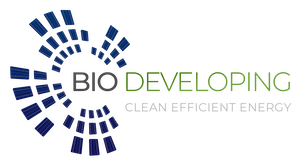How do Solar Panels Work?
In April 1954, researchers at the Bell Laboratories in Murray Hill, New Jersey, demonstrated the first practical silicon solar cell. While the discovery of solar cells goes back to an early observation of the photovoltaic effect in 1839, it was this moment that would ultimately spark the invention of solar panels.
Today, solar panels are an important and reliable source of energy that is used to power all kinds of things from homes and businesses to large industrial plants and cities, and even spaceships. So, how do solar panels work?
Solar panels generate electricity by converting the energy from the sun. The process by which this occurs is known as the photovoltaic effect.
Solar panels are composed of multiple layers of materials, one of which is silicon, a semiconductor. Photons from the sun’s beams are absorbed by the semiconductor material when they strike the solar panel. Electrons are knocked loose from their atoms, resulting in an electrical current.
The solar panel is designed with a circuit that collects this electricity and transmits it through wires to an inverter, which converts the solar panel’s direct current (DC) into alternating current (AC) that may be used to power homes and businesses.
The amount of energy produced by a solar panel is determined by several parameters, including the panel’s size, the amount of sunshine it gets, and the panel’s efficiency. In order to enhance energy output, solar panels are often positioned on rooftops or other sites that receive a lot of direct sunshine.
How Do Solar Panels Convert Sunshine Into Electricity?
In last week’s article, I discussed solar panels in New Jersey, and whether or not New Jersey was. a good state to install solar panels. I thought it would be good to follow that article with one that talked about how solar panels work.
Solar panels use the photovoltaic effect to turn the sun’s rays into power. The interaction between sunlight and the semiconductor material (often silicon) that makes up the solar panel is involved in this process.
The solar panel is constructed of multiple layers of material. The top layer is a thin glass or plastic sheet that shields the solar cells from the elements. The solar cells, which are constructed of a thin layer of semiconductor material, are located beneath this layer. Silicon is the most frequent semiconductor material used in solar panels.
When sunlight strikes a solar panel, the semiconductor material in the solar cells absorbs it. This excites electrons in the substance, causing them to migrate about. The mobility of these electrons causes an electrical current to flow. This current is collected by a network of wires after passing through the solar panel.
The solar panel generates direct current (DC) electricity. Most households and businesses, on the other hand, use alternating current (AC) to power their electrical devices. An inverter is used to convert the DC produced by the solar panel into AC. The inverter converts the DC electricity generated by the solar panel into AC electricity that may be utilized to power electrical equipment.
In summary, solar panels work by converting solar energy into electrical energy that can be utilized to power homes and businesses. This procedure is clean, renewable, and aids in the reduction of reliance on fossil fuels.
Article by
Rebecca Samson
Editor, Bio Development
Click Here to Schedule a Call With Bio Developing



Recent Comments